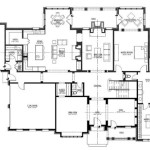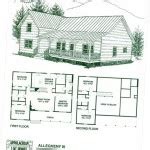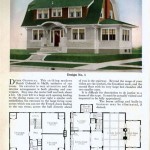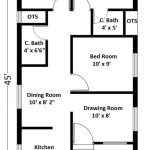Discover Your Dream Lakeside Haven: Explore House Plans for Lake Ontario
Lake Ontario, one of the Great Lakes, presents a unique opportunity for those seeking waterfront living. The allure of its expansive waters, scenic shorelines, and access to nature makes it an ideal location for a dream home. Establishing such a home, however, requires careful consideration of various factors, including the selection of appropriate house plans. This article explores key aspects of house plans suitable for properties on Lake Ontario, focusing on design considerations, environmental factors, and lifestyle enhancements.
Understanding the Landscape and Environmental Considerations
Building a home near Lake Ontario demands a keen awareness of the local environment. The lake's presence significantly influences the climate, impacting factors such as temperature, wind patterns, and precipitation. Consequently, house plans must incorporate elements that address these specific environmental conditions.
Firstly, homes located along the lake are subjected to increased exposure to wind. Strong winds can exert significant pressure on structures, potentially leading to structural damage over time. Therefore, house plans should prioritize wind resistance. This can be achieved through the use of durable building materials, such as reinforced concrete or steel framing, and the incorporation of architectural features that minimize wind load. Roof designs, in particular, should be carefully considered, favoring low-pitched or hip roofs that offer greater stability in high-wind conditions. Furthermore, the placement of windows and doors should be strategic, minimizing exposure to prevailing winds. Windbreaks, such as strategically placed trees or shrubs, can also help to mitigate the impact of wind on the property.
Secondly, homes near Lake Ontario are susceptible to higher levels of moisture and humidity. This can lead to issues such as mold growth, wood rot, and corrosion. To combat these problems, house plans should prioritize proper ventilation and moisture management. This includes the installation of adequate insulation to prevent condensation, the use of moisture-resistant building materials, and the incorporation of vapor barriers to protect walls and ceilings. Furthermore, the design should promote airflow throughout the home, reducing the buildup of moisture in enclosed spaces. Siting the house properly to take advantage of prevailing breezes will also aid in ventilation.
Thirdly, the fluctuating water levels of Lake Ontario require careful consideration during the design and construction phases. Shoreline erosion is a potential concern, particularly during periods of high water levels. House plans should incorporate setbacks from the shoreline to minimize the risk of damage from erosion. Furthermore, the foundation should be designed to withstand the potential for flooding or water damage. This may involve elevating the home on piers or pilings, or constructing a reinforced concrete foundation that is resistant to water penetration. Implementing shoreline stabilization measures, such as the construction of retaining walls or the planting of vegetation, can also help to protect the property from erosion.
Design Elements for Lakeside Living
Beyond environmental considerations, house plans for Lake Ontario should also incorporate design elements that enhance the lakeside living experience. This includes maximizing views, creating outdoor living spaces, and incorporating natural light.
Maximizing views of the lake is a primary objective for many homeowners. House plans should strategically position windows and balconies to capture the panoramic vistas of Lake Ontario. Large, expansive windows can create a sense of connection with the water, blurring the boundaries between the interior and exterior. Floor-to-ceiling windows or sliding glass doors can provide unobstructed views of the lake from multiple rooms. Furthermore, the orientation of the house on the property should be carefully considered to maximize the exposure to sunlight and views. Decks, balconies, and patios can serve as outdoor vantage points, providing spaces for relaxation and entertainment while enjoying the scenic beauty of the lake. Consider incorporating multiple levels to the home to elevate the views from different vantage points.
Creating outdoor living spaces is another key element of lakeside home design. A well-designed outdoor space can extend the living area of the home, providing a seamless transition between the interior and exterior. Decks, patios, and porches can serve as outdoor dining areas, lounging areas, and entertaining spaces. Fire pits or outdoor fireplaces can create a cozy and inviting atmosphere, extending the usability of the outdoor space into the cooler months. Outdoor kitchens can provide a convenient space for preparing meals while enjoying the views of the lake. Landscaping can further enhance the outdoor living experience, creating a sense of privacy and serenity. Selecting native plants adapted to the local climate can also help to minimize maintenance and promote biodiversity.
Incorporating natural light is essential for creating a bright and airy living space. House plans should maximize the amount of natural light entering the home, reducing the need for artificial lighting. Large windows, skylights, and light wells can be used to bring natural light into the interior spaces. The orientation of the house should be carefully considered to maximize exposure to sunlight throughout the day. Light-colored interior finishes can also help to reflect natural light, making the space feel brighter and more open. Consider the placement of windows to avoid glare and overheating during the summer months. Overhangs and awnings can provide shade, while still allowing natural light to enter the home.
Lifestyle Enhancements and Interior Considerations
House plans for Lake Ontario should also consider the specific lifestyle needs and preferences of the homeowners. This includes incorporating features that support recreational activities, provide adequate storage space, and create a comfortable and functional living environment.
For those who enjoy water sports and outdoor activities, house plans should incorporate features that support these interests. This may include a boat dock or launch ramp for easy access to the lake. A dedicated storage area for kayaks, canoes, and other water sports equipment can help to keep the property organized and clutter-free. Outdoor showers can provide a convenient way to rinse off after swimming or boating. A screened-in porch or sunroom can provide a comfortable space to relax and enjoy the outdoors, while being protected from insects. Consider creating spaces for cleaning and maintaining outdoor equipment.
Adequate storage space is essential for any home, but it is particularly important for lakeside properties where homeowners may have a greater need for storing recreational equipment, seasonal items, and other belongings. House plans should incorporate ample closet space, storage rooms, and attic or basement storage areas. Built-in shelving and cabinets can maximize the use of available space. A mudroom or entryway can provide a convenient space for storing coats, shoes, and other outdoor gear. Consider designing storage spaces that are easily accessible and organized.
Creating a comfortable and functional living environment is paramount. House plans should prioritize the flow of traffic throughout the home, ensuring that the layout is conducive to both everyday living and entertaining. Open floor plans can create a sense of spaciousness and connection between different living areas. A well-designed kitchen is essential for those who enjoy cooking and entertaining. A comfortable and inviting living room is a must for relaxation and socializing. Bedrooms should be designed to provide privacy and tranquility. Consider the acoustics of the home when selecting materials and designing spaces. Soundproofing measures can help to minimize noise pollution and create a more peaceful living environment. Incorporate smart home technology to enhance comfort, convenience, and energy efficiency.
Careful planning and design are essential for creating a dream lakeside haven on Lake Ontario. By considering the environmental factors, incorporating design elements that enhance the lakeside living experience, and addressing the lifestyle needs of the homeowners, it is possible to create a home that is both beautiful and functional.

Open Concept Small Lake House Plans Houseplans Blog Com

Open Concept Small Lake House Plans Houseplans Blog Com

Open Concept Small Lake House Plans Houseplans Blog Com

Open Concept Small Lake House Plans Houseplans Blog Com

Open Concept Small Lake House Plans Houseplans Blog Com

Cottage Builders Kawartha Lakes Your Vacation Homes And Builder Myowncottage Ca

A Waterfront Haven In Lakefield Ontario Canada For 15668218

Lakeside Cottage Als In Muskoka Ontario

Building Your Dream Home Cottages In Haliburton County

Open Concept Small Lake House Plans Houseplans Blog Com
Related Posts








